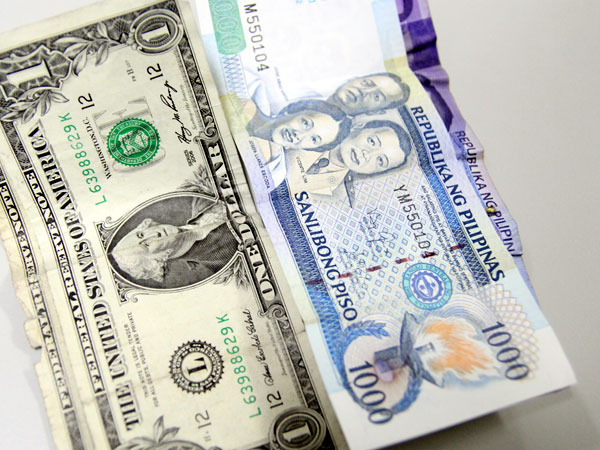MANILA — Following a hawkish statement from the US Federal Reserve chair and ahead of US President-elect Donald J. Trump’s assumption into office, the peso touched on the 50:$1 mark Thursday before closing at an almost one-month low.
The peso opened at 50:$1 but closed at 49.98:$1, the weakest since Dec. 22, 2016’s close of 49.99:$1. It shed 19 centavos from Wednesday’s close of 49.79:$1.
At the Philippine Dealing System, the peso reached an intraday high of 49.9:$1.
The total volume traded rose to $560 million from $557 million last Wednesday.
Asked why the peso hit the 50:$1 level Thursday, Bank of the Philippine Islands vice president and chief economist Emilio S. Neri said: “I believe it was driven largely by FOMC [Federal Open Market Committee] Chair Janet Yellen’s somewhat hawkish comments last night.”
Yellen on Wednesday night (Thursday morning in Manila) signalled that the US Fed would pursue a path of steady interest rate hikes, reports said.
Neri nonetheless noted that the peso was “only slightly underperforming regional currencies at the moment with the Korean won leading the losses against the US dollar.”
For Neri, “while we could be wrong, we don’t see any meaningful market effects coming from Trump’s inauguration” on Friday.
“We think market’s anticipation of the long break during the Chinese lunar festival (Chinese New Year) could have a meaningful effect on markets instead,” Neri said.
ING Bank Manila senior economist Joey Cuyegkeng agreed that the peso further weakened due to “Yellen’s positive view of the US economy that is near or at Fed’s goal while inflation in December was at 2.1 percent,” which resulted in higher US yields.
Also, there was “caution ahead of US President-elect Trumps inauguration,” Cuyegkeng added.
Moving forward, Neri said that “should we see the usual safe haven trades this time of year, we could see the US dollar strengthening further against emerging market currencies until about early March,” such that the peso could close above 50:$1 for the first time since November 2006.
For his part, Cuyegkeng expects a “volatile environment as investors adjust to the new realities—in the US, global and local, as leaders discuss in more detail policies, priorities and programs.”
“Strengthening our domestic economy would keep the Philippine economy resilient in the face of challenges,” Cuyegkeng said.
In December, economic managers raised the government’s foreign exchange rate assumption for 2017 to a “comfortable” 48-50:$1 from 45-48:$1 previously.
“We’re comfortable with 50:$1 as the upper bound for the exchange rate basically because we have steady inflow of dollars,” Budget Secretary Benjamin E. Diokno told reporters after last month’s meeting of the Cabinet-level, interagency Development Budget Coordination Committee. SFM
